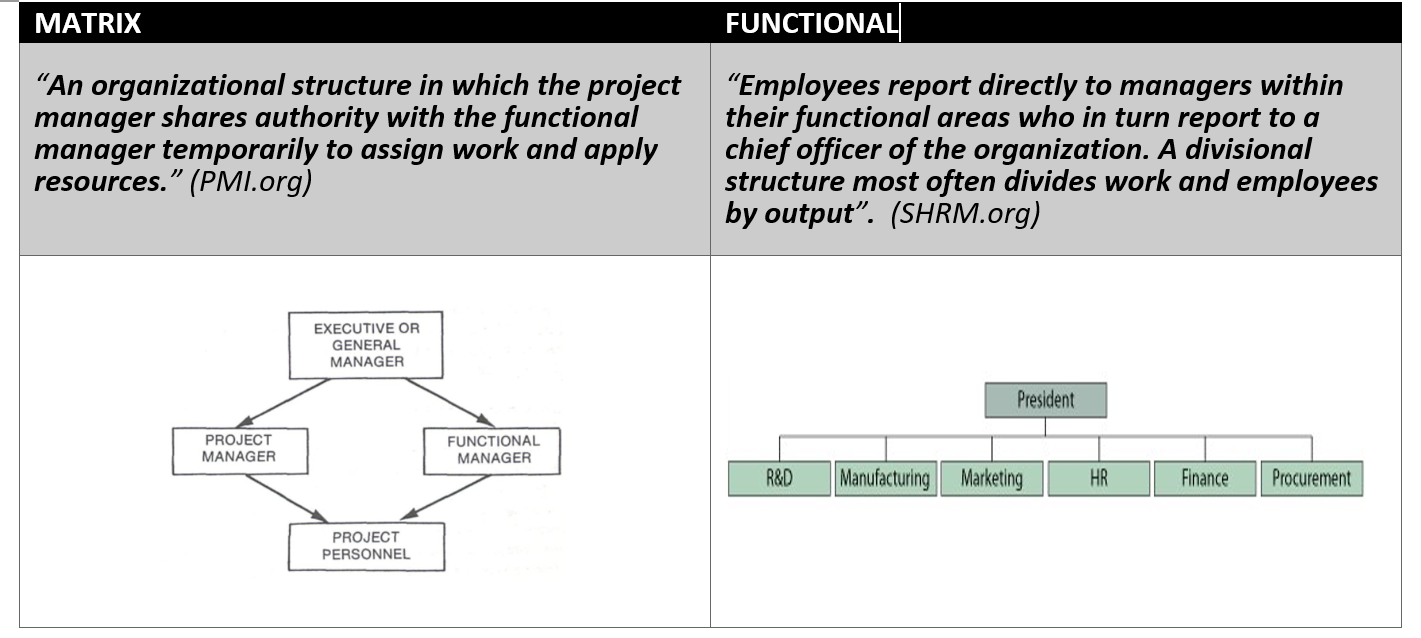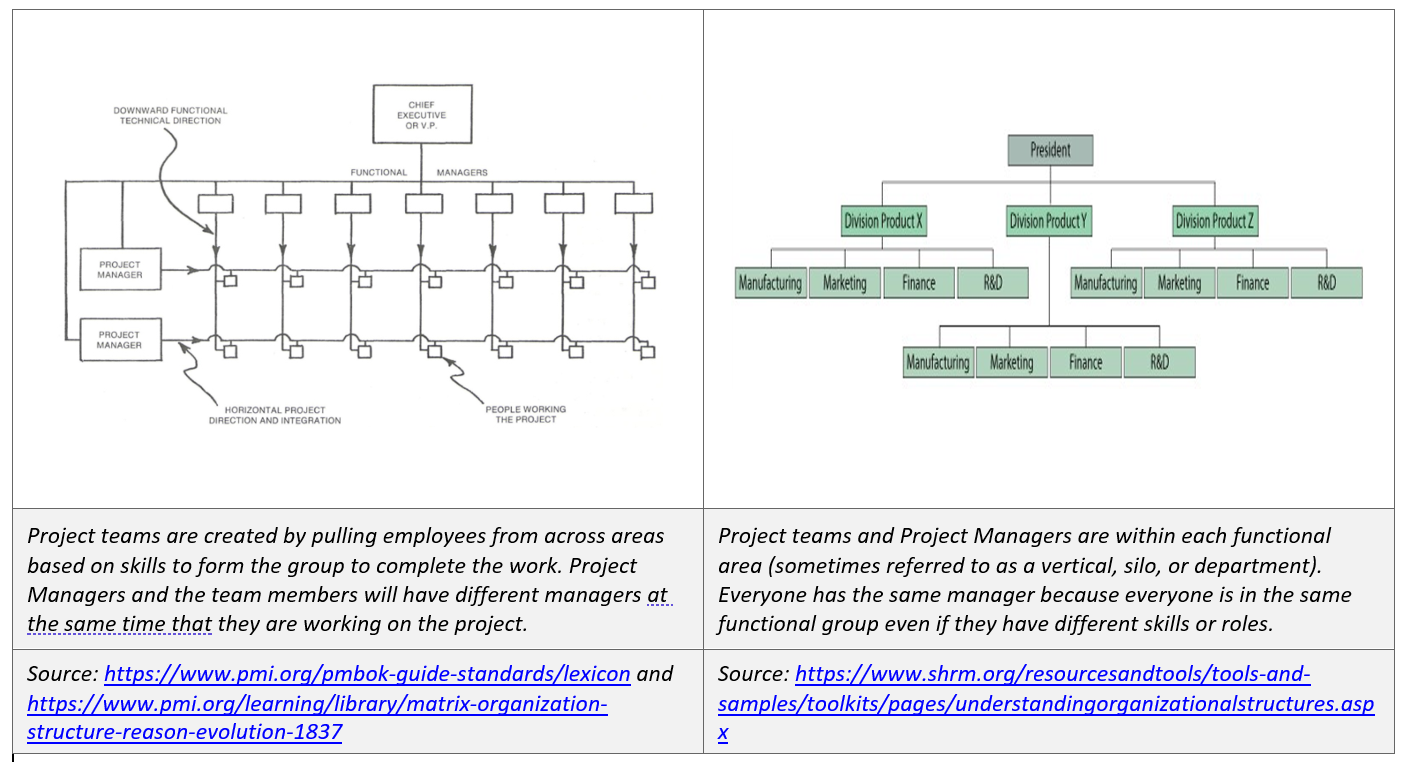
Project Manager in a Matrix World
Matrix vs. Functional Organizational Structure
If you are familiar with the 1999 movie “The Matrix,” the protagonist Neo is given a choice of the red pill or the blue pill and learning more about the reality of his existence. Project Managers may not be saving all of humanity from an evil software program like Neo, but they do need to make choices and navigate complicated situations. You need to know the different in matrix and functional organizations because it directly impacts how project teams are formed, supported, and work is tracked.


Search for the word “matrix” in the Project Management Institute (PMI.org) database, and you’ll find search results from 1977, 1985, 1992, 2006, and beyond; the concept is not new and in fact, is more prevalent today than ever.
Why Matrix Organizational Structure Impacts Project Managers
The formation and permanence of a team has a direct impact on how a Project Management can guide the work. The matrix setting allows “for impermanent project structures that co-existed with relatively permanent functional structures” which allows for timely response to business needs and also means that every team member has at minimum two managers.
Work assignments and priorities given by the project manager in the Matrix structure are driven by the project itself, not the organization. The project manager is focused on the goals, budget, timeline, and resources within the context of the project. However, the functional managers can also make assignments to the same employees who are on project teams. Thus, the project manager and functional manager share responsibilities in the matrix organization.
Benefits for Project Managers in (Strong) Matrix Organization
When the matrix organization has been optimized, meaning everyone understands how work and information flows within it, project managers benefit in many ways including:
- Access to internal talent beyond the limitations of a single department
- Professional development opportunities (cross training) through interdepartmental collaborations
- Create multidisciplinary teams to address complex work
Challenges Project Managers Face in (Weak) Matrix Organization
Some organizations struggle to embrace the matrix structure, or individual managers are resistant to what they perceive as a threat to their power. In the weak matrix organization, project managers and teams will face challenges such as:
- Productivity reduced due to unclear or contradictory priorities
- Morale and engagement reduced due to conflicts among managers
- Delays in work due to high demand, limited supply skill sets
Project managers are never ones to walk away from a challenge. Understanding the opportunities and pitfalls of the organizational structure enable you to make more informed decisions and foster productive professional relationships.
How to Be Project Manager in Matrix Organization
Project managers combine their knowledge of the organizational structure with their leadership skills, emotional intelligence skills, communication skills to manage work. Use these tactics to enhance your project team’s ability to enjoy success in the matrix structure:
- Find out more about each project team member’s role in organization and their professional experience.
- Create opportunities for project team members to know each other.
- Acknowledge that everyone is coming from different part of the organization, including yourself, but you all work for same “team” (the company itself).
- Recognize that team members may have conflicting assignments from functional leader and seek to mitigate.
- Communicate with team members’ functional manager to thank them for supporting the project work.
Matrix organizations enable efficiencies but only when the employees are able to truly collaborate and communicate.
Training to Support Project Management in Matrix
Consider these Project Management Academy classes to enhance existing skills and grow new ones to ensure your success in the matrix environment:
As a profession, project managers embed continuous improvement in their work and their own skills. To that end, project managers can thrive and can realize great successes when they have the skills to manage within any organizational structure.
About Megan Bell, MPM, PMP
A multi-hyphenate of corporate training, higher education, and creative agency work, Bell’s passion for connecting people to impactful information fuels an evolving career journey. Her portfolio includes conducting learning analytic research and reporting, managing a corporate mentoring program, authoring a blog series, facilitating leadership and career programs, serving on a non-profit board, and even occasional voice work. Bell’s education background encompasses UNC-Chapel Hill, Western Carolina University, and North Carolina State University.




